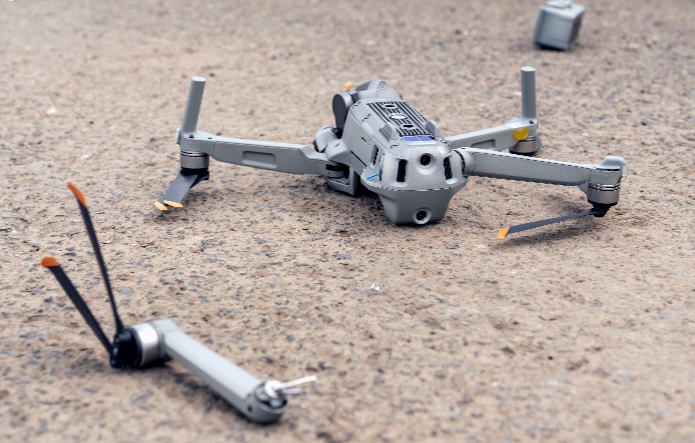Drones have become indispensable tools for capturing breathtaking aerial views and exploring new perspectives. To ensure your drone continues to soar smoothly and capture stunning footage, it’s crucial to prioritize proper maintenance. In this guide, we’ll cover Drone Care 101, providing you with essential tips to maximize your drone’s lifespan and performance.
1. Regular Inspection is Key
The first step in drone maintenance is a thorough visual inspection before and after every flight. Check for any signs of damage, loose components, or wear and tear. Pay special attention to the propellers, landing gear, and gimbal.
2. Keep it Clean
Drones are exposed to various elements, including dust, dirt, and moisture. After each flight, clean your drone using a soft brush or compressed air to remove debris from the motors, propellers, and other sensitive components. For stubborn dirt, a gentle wipe with a microfiber cloth and a small amount of isopropyl alcohol can be effective.
3. Battery Care
Batteries are the lifeblood of your drone. To maximize their lifespan, avoid overcharging or letting them drain completely. Store them in a cool, dry place, and avoid exposing them to extreme temperatures. It’s also a good practice to cycle your batteries occasionally by charging and discharging them fully.
4. Maintain Proper Calibration
Calibration ensures that your drone’s sensors and systems are working together accurately. Before each flight, make sure to calibrate the compass and IMU (Inertial Measurement Unit) if required. Follow the manufacturer’s instructions for the specific calibration process of your drone model.
5. Check and Tighten Fasteners
Due to the vibrations and movements during flight, screws and fasteners may become loose over time. Regularly inspect and tighten them to prevent any potential issues during flight. Pay special attention to the propeller fasteners and landing gear attachments.
6. Update Firmware and Software
Manufacturers often release firmware and software updates to enhance performance, add features, and fix bugs. Stay updated with the latest releases and ensure your drone’s firmware, controller, and app are all running the latest versions.
Common Drone Problems and How to Fix Them
Despite your best efforts, you may encounter some common drone issues. Here are solutions to a few of the most frequently encountered problems:
1. Drifting or Erratic Flight
Solution: Recalibrate the compass and IMU. Check for any interference from nearby objects or electronic devices.
2. Unstable Video Footage
Solution: Ensure your gimbal is calibrated and functioning properly. Avoid abrupt movements during flight, and consider using a higher frame rate to reduce motion blur.
3. Weak or Lost Signal
Solution: Ensure your remote controller is charged and that you’re within the recommended range. Fly in open areas away from Wi-Fi interference. If problems persist, consider upgrading your antennas or using a signal booster.
Preventing Flyaways: Troubleshooting GPS and Connectivity Issues
Flyaways can be a nightmare for drone owners. These unexpected events occur when a drone loses its connection to the remote controller or experiences GPS signal issues. To prevent flyaways, follow these steps:
1. Verify GPS Lock
Before takeoff, ensure your drone has acquired a strong GPS signal. This provides essential data for accurate positioning and stable flight.
2. Maintain Line of Sight
Always maintain a clear line of sight with your drone. Avoid flying behind obstacles or in areas with poor visibility.
3. Calibrate Compass and IMU
Regular calibration of the compass and IMU is crucial for accurate positioning. Follow the manufacturer’s instructions for proper calibration.
4. Update Home Point
Set the home point to a clear, open area before takeoff. In case of signal loss, the drone will return to this point.
5. Return-to-Home (RTH) Test
Before each flight, perform a Return-to-Home (RTH) test to ensure your drone is properly calibrated and can navigate back to its home point.
By following these maintenance and troubleshooting tips, you’ll not only extend the lifespan of your drone but also enhance its performance, ensuring each flight is a seamless and enjoyable experience.

